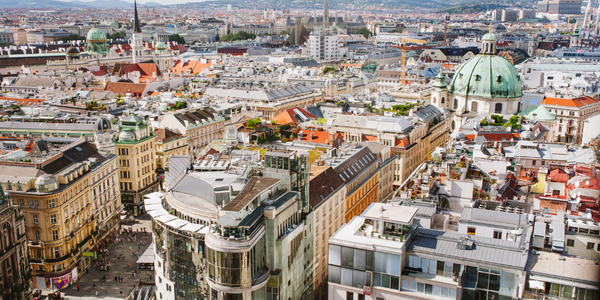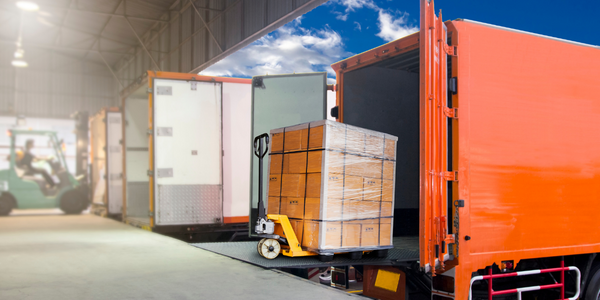ТЎ║ТЁДтЪјтИѓУ┐љУљЦ

ТдѓУ┐░
ТЎ║ТЁДтЪјтИѓУ┐љУљЦтїЁТІгт«ъуј░ТЎ║ТЁДтЪјтИѓТдѓт┐хТЅђжюђуџёСИђу│╗тѕЌУДБтє│Тќ╣ТАѕ№╝їжђџУ┐Єт░єС┐АТЂ»тњїжђџС┐АТіђТю»СИјС╝аТёЪтЎетњїУ┐ъТјЦУ«ЙтцЄуЏИу╗Њтљѕ№╝їС╗ЦС╝ўтїќтЪјтИѓУ┐љУљЦтњїТюЇтіАуџёТЋѕујЄсђѓТЎ║ТЁДтЪјтИѓТіђТю»Сй┐тЪјтИѓт«ўтЉўУЃйтцЪСИјуцЙтї║ТѕљтЉўтњїтЪјтИѓтЪ║уАђУ«ЙТќйУ┐ЏУАїС║њтіе№╝їт╣Хт«ъТЌХуЏЉТјДтЪјтИѓТЃЁтєхсђѓт»╣тЪјтИѓу«АуљєУђЁуџётЦйтцётїЁТІгт«ъТЌХУиЪУИфтЪјтИѓСИГуџёС║ІС╗ХсђЂу«АуљєТІЦтахсђЂТЈљжФўУ┐љУљЦТЋѕујЄсђЂтЄЈт░Љу┤ДТђЦтЊЇт║ћТЌХжЌ┤С╗ЦтЈіт«ъуј░У┐юуеІу«Ауљєсђѓуј░С╗БУДБтє│Тќ╣ТАѕТЌетюет░єТЅђТюЅтЪјтИѓТЋ░ТЇ«жЏєТѕљтѕ░СИђСИфС╗фУАеТЮ┐СИГсђѓУААжЄЈтјєтЈ▓тњїтйЊтЅЇ KPI С╗ЦУ┐ЏУАїу╗ЕТЋѕУ»ёС╝░тњїти«УиЮтѕєТъљ№╝їт╣ХУДётѕњТюфТЮЦуџётЪ║уАђУ«ЙТќйтњїТюЇтіАТіЋУхёсђѓ
жђѓућеУАїСИџ
- У┐љУЙЊ
- УЃйТ║љ
- т╗║уГЉСИјТЦ╝т«Є
жђѓућетіЪУЃй
- тЁХС╗ќ
ТАѕСЙІуаћуЕХ.

Case Study
Creating Seamless Services for Societies in Transition
Vienna City Council needed a new way to deliver a better service, higher quality care and more transparency while cutting costs and minimizing bureaucracy. The chosen solution must have the following requirements: consolidation of multiple data within a single management system, a user-friendly interface, compliance with new regulatory requirements, ┬ёcultural sensitivity to the differing requirements of multiple faiths, and more transparency for tracking cases.
.png)
Case Study
Smart City Spotlight (Bristol, UK)
In order to catalyze innovation and economic development, Bristol aims to build a platform for the development of smart city applications that will promote innovation and deliver a better quality of life for it's residents. It is partnering with Bristol University to promote Bristol Is Open (BIO) — an effort to deploy and trial a citywide smart city network.

Case Study
A New Level of Urban Freight Control via RFID
The municipality of Verona had the exigency to enforce the regulations for commercial vehicles for into the historic city center to reduce traffic, vehicles with permits dedicated to city logistics within certain hours often exceeded the permitted period of stay inside the congestion zone. In addition Verona had the goal to eliminate the falsification of disabled parking passes and increase the on street enforcement. The historic city center of Verona was already equipped with a congestion area system comprising of video cameras, but the ratification of the system limited the functionality of the system. It was not possible to measure time of ingress and egress nor the duration of stay of single vehicles. Once entered, it was not possible to verify if the vehicle spent more than the consented period of time inside the city leading to an increased congestion. For disabled people, the existing solution led to various problems: to access to the city center handicapped drivers or passengers had to inform the municipality up to 48 hours in advance for avoiding a fine and falsificated copies of disabled permits (CUDE) were a frequent problem. A new solution needed to cover all this aspects, while digitizing the related processes to increase efficiency and reduce the workload at the cities helpdesks.




